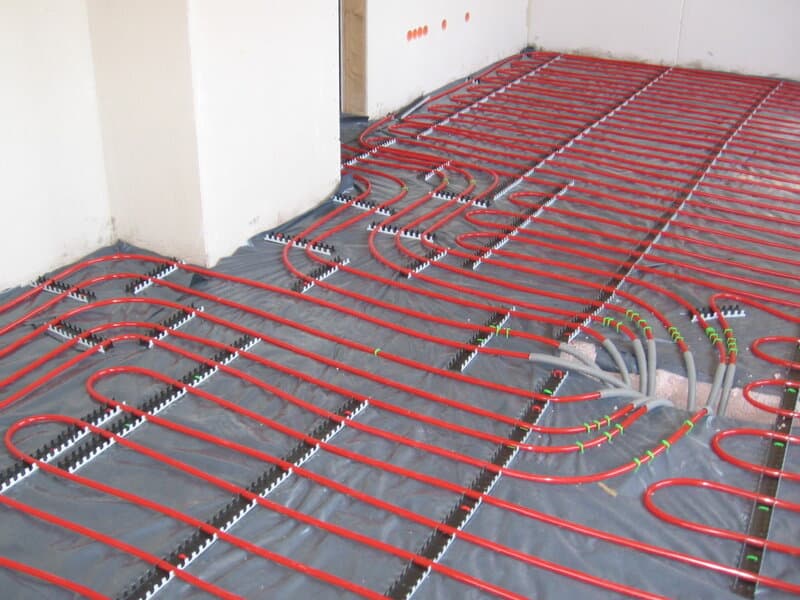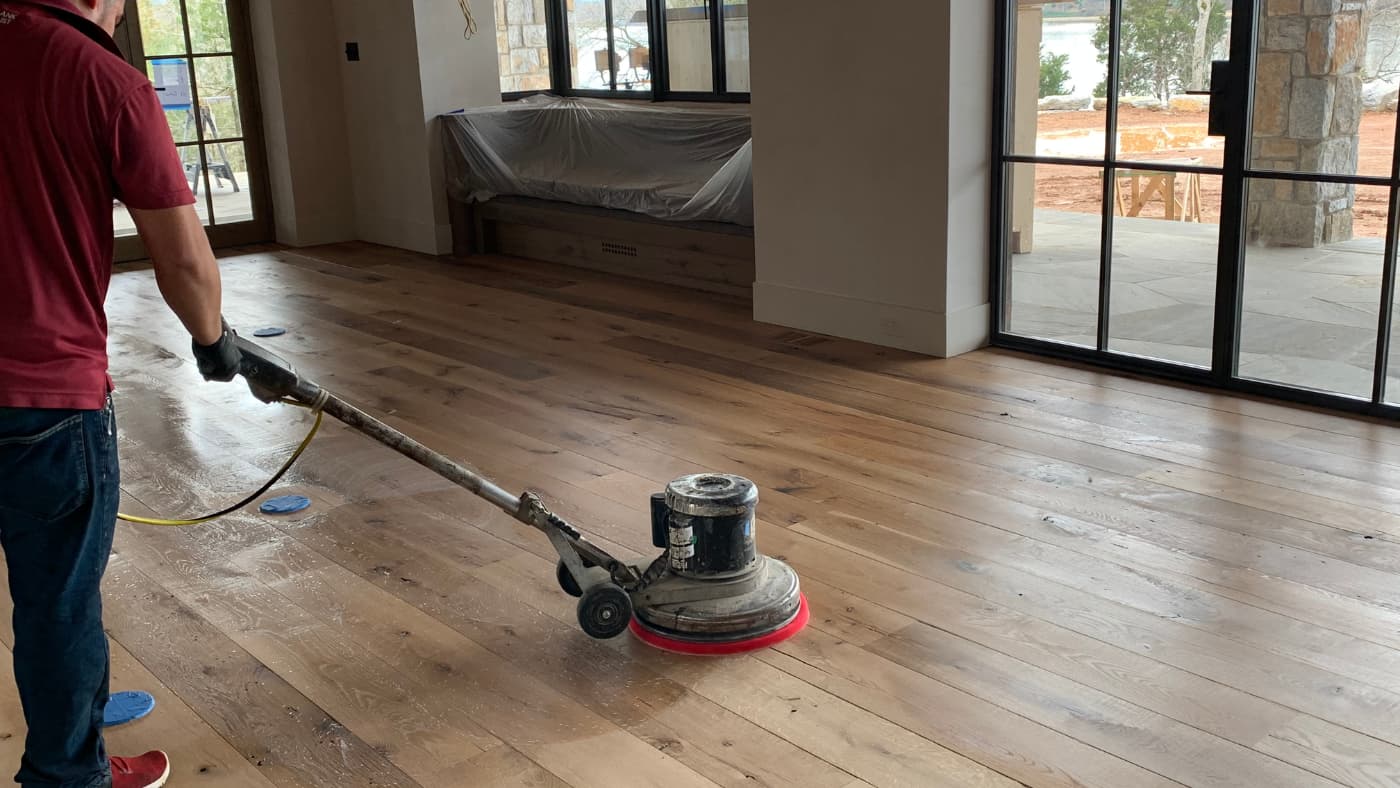Wood Floors and Radiant Heat
With the weather cooling down and the colder months on our doorstep, many are starting to think about upgrading their heat and air systems. One option that some might want to consider is radiant heating, specifically radiant floor heating.
Before we focus on the flooring aspect of radiant floor heating, let’s talk about what radiant heating is in general:
If you have ever felt the warmth from a stovetop across the room, you have experienced radiant heat. Systems that provide radiant heat warm the floors or wall panels directly, then the people or objects in the room are warmed by the infrared radiation from the floors or panels.
There are quite a few advantages of having radiant heat over other types of heating, the first being it is more efficient. With traditional forced-air heating systems, the duct can lose a lot of heat. Additionally, radiant heating is not going to move around particles in the air like forced-air systems do. This can be highly beneficial for allergy sufferers.
Radiant Floor Heating
When the above method of heating is located in the floor, it is called Radiant Floor Heating. The floor is heated by one of a few processes, and then natural circulation occurs as the warm air rises to the top.
There are three main ways radiant floor heating systems accomplish this.
1. Air-Heated Radiant Floors
For this type of radiant heat floor, the heat-carrying medium is air. Although this is an option, people rarely install these types of radiant heat floors. This is due to the inefficiency of air being able to hold heat for a length of time. So, while this is an option, it is not one that we readily recommend. Of course, if you have a traditional furnace that you want to repurpose, it could be something to research more.
2. Electric Radiant Floors
The heat-carrying medium for electric radiant floors is electric heating cables or electrical matting that is mounted on the subfloor. This option can be effective in heating your home; however, it might not be cost-effective. Unless you have a large thermal mass like a thick concrete subfloor, your system could work overtime to continually heat the home. If you choose this medium, the Department of Energy recommends asking your electric provider to charge time-of-use rates and allow you to “charge” your thermal mass (concrete slab in this scenario) during off-peak hours. If the thermal mass is large enough, it can off-put heat for up to 10 hours. This could be a way to save on your electric bill.
3. Hydronic Radiant Floors
This is the most popular and cost-efficient way to utilize radiant floor heating. This system pumps hot water from a boiler through tubes in the floor. In some types of radiant hydronic floors, extra valves and pumps control the water flow to ensure even heating throughout the home.
Whichever method you choose, the tubes and heating elements will be installed under your main floor covering. There are different “wet” and “dry” methods of installation that you can read about here.
When it comes to the floor type that will be on top of the radiant heat system, there are a few options.
Ceramic tile has been one of the most common floor coverings for radiant heat floors because it conducts heat well and stores thermal heat for a more extended period of time than some other options. Others have seen success using linoleum or vinyl. Some suggest that wood floors are the best because of their natural warmth. However, almost all flooring specialists would agree that carpet should be avoided.
Hardwood Flooring and Radiant Heating
Wood floors can be an excellent choice for radiant heat. It provides a comfort level from the natural feel of the wood and adds significantly to the aesthetics of your home.
Engineered hardwood planks are the best option for installation over radiant heat since the cross-ply construction helps keep the plank stable during fluctuations in temperature and moisture. Of course, that is not to say that you cannot use solid wood flooring over radiant heat. When choosing solid wood, first, you want to consider the species. White Oak is very strong and stable, so it is a great choice for solid wood covering. You also want to think about how the plank was cut: quarter-sawn wood has grains that run vertically and are, therefore, more stable when exposed to fluctuations in temperature.


If you are considering radiant heat flooring and want a beautiful hardwood floor to add to the look and feel of your home, give us a call or fill out our free consultation form. We would be happy to discuss your options with you and help create that comfortable environment you are looking for.







